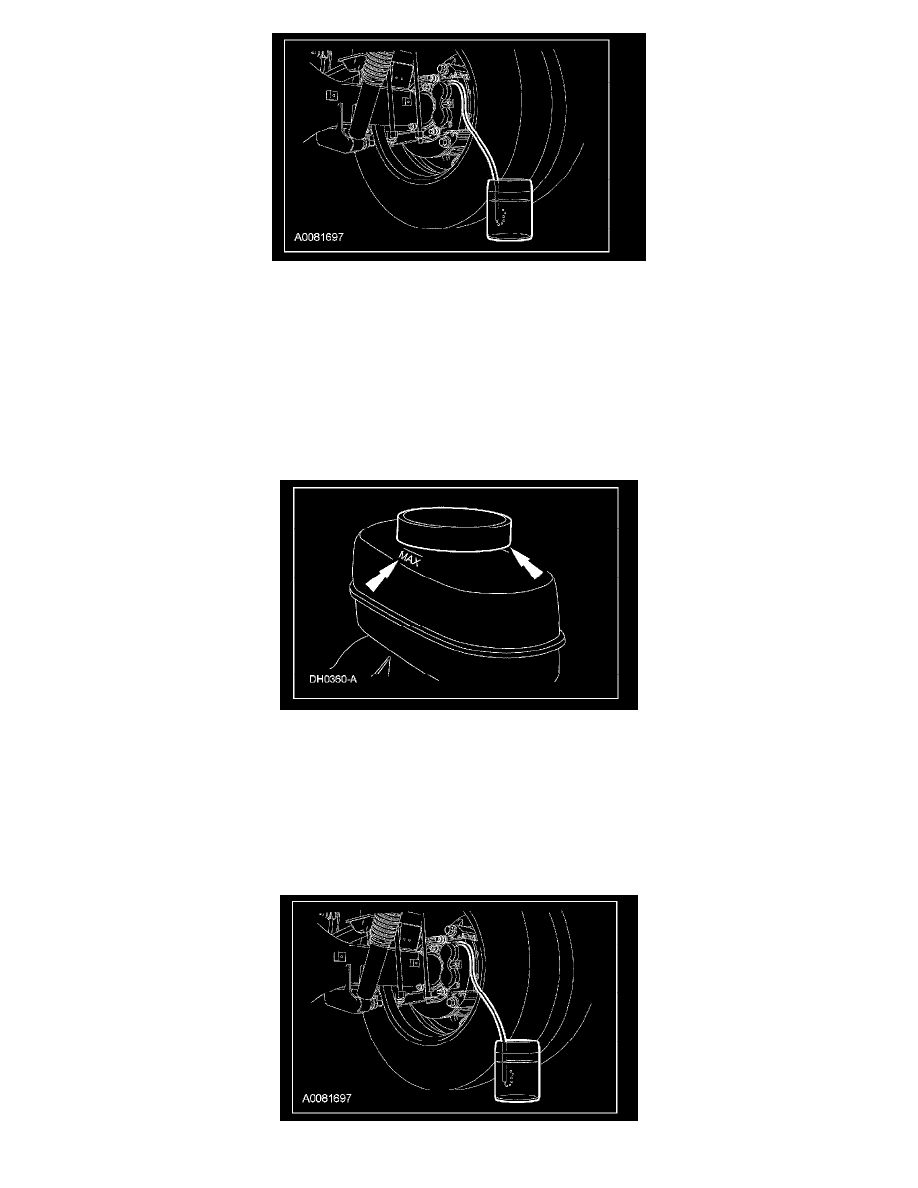F 250 2WD Super Duty V8-5.4L (2008)

3. Have an assistant pump the brake pedal at least 3 times and then hold firm pressure on the brake pedal.
4. Loosen the RH rear bleeder screw until a stream of brake fluid comes out. While the assistant maintains pressure on the brake pedal, tighten the
RH rear bleeder screw.
^
Repeat until clear, bubble-free fluid comes out.
^
Refill the brake master cylinder reservoir as necessary.
5. Tighten the RH rear bleeder screw and install the bleeder screw cap.
^
Tighten to 15 Nm (11 lb-ft).
6. Repeat Steps 2 through 5 for the LH rear, RH front and LH front bleeder screws in this order.
Pressure Bleeding Method
1. Clean all dirt from and remove the brake master cylinder filler cap and fill the brake master cylinder reservoir with clean, specified brake fluid.
2. NOTE: Master cylinder pressure bleeder adapter tools are available from various manufacturers of pressure bleeding equipment. Follow the
instructions of the equipment manufacturer when installing the adapter.
Install the bleeder adapter to the brake master cylinder reservoir and attach the bleeder tank hose to the fitting on the adapter.
3. NOTE: Bleed the longest line first. Make sure the bleeder tank contains enough clean, specified brake fluid to complete the bleeding operation.
Remove the bleeder screw cap and place a box-end wrench on the RH rear bleeder screw. Attach a rubber drain hose to the RH rear bleeder screw
and submerge the free end of the hose in a container partially filled with clean, specified brake fluid.
